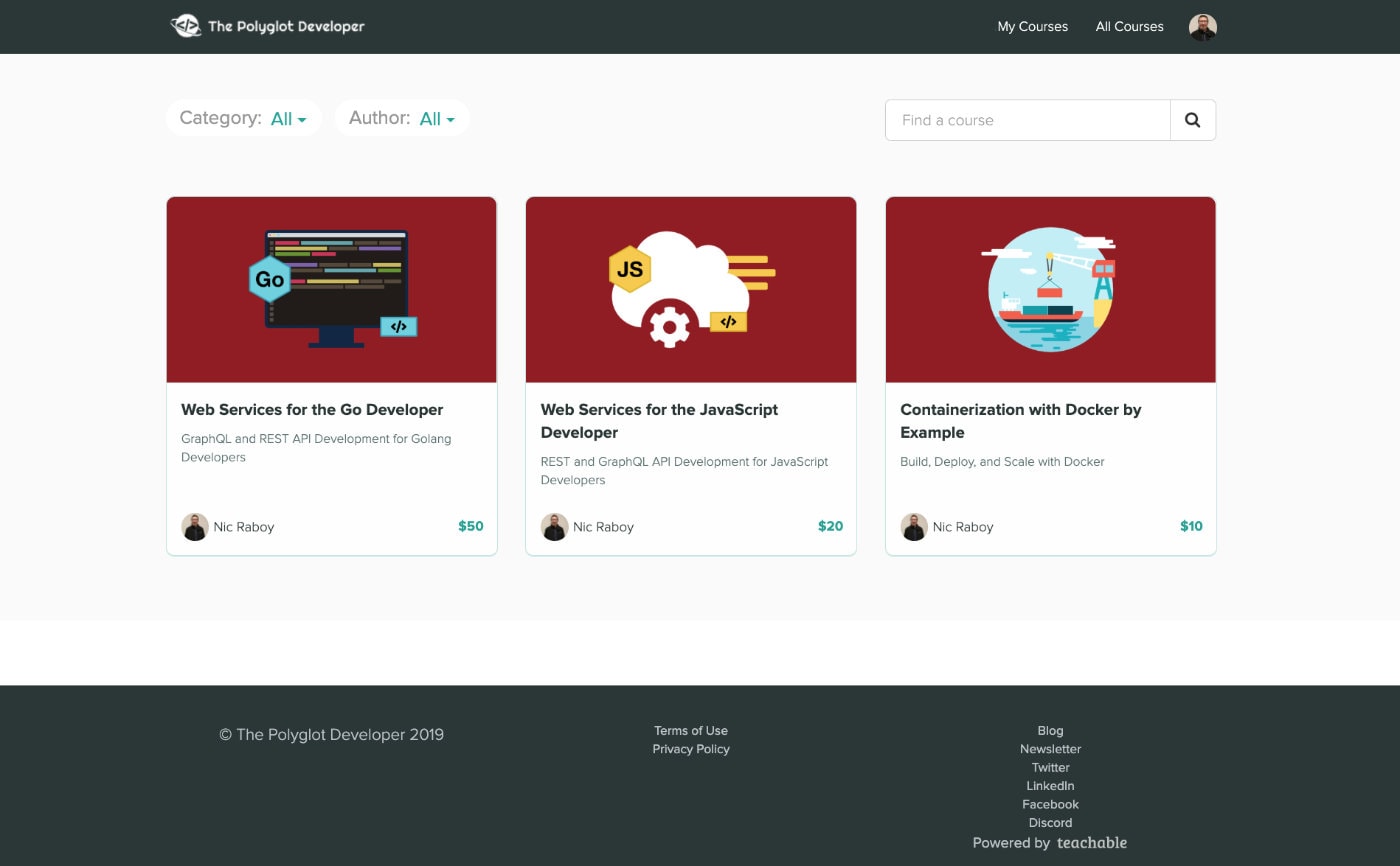Creating an eBook with Pandoc and Markdown
You might already be aware of this, but I’ve accomplished a life achievement of writing and self-publishing two technical eBooks. I published Web Services for the JavaScript Developer, followed by Web Services for the Go Developer, which contain the same concepts using two different programming technologies.
If you’ve ever thought about writing an eBook, you’ve probably opened tools like Apple Pages or Microsoft Word and said to yourself, formatting this is going to be a nightmare. Technical content will, more often than not, contain code, which may have sophisticated formatting. Writing a programming eBook or another technical eBook doesn’t have to be a hassle when you’re using the right tooling.
In this tutorial, we’re going to explore Pandoc, and see how you can write a book quickly and easily with Markdown.
Read MoreTPDP E32: Getting Familiar with TypeScript for Development
I’m happy to announce that E32 of The Polyglot Developer Podcast is now available for download!
This episode features Corbin Crutchley, a friend, regular guest, and owner of the blog, Unicorn Utterances. You might remember Corbin from the episode, Asynchronous JavaScript Development, where we focused on promises, callbacks, and a lot of other asynchronous topics in JavaScript. This time around we’re focusing on TypeScript, which is a super-set to JavaScript, and is becoming an increasingly popular development technology.
Read MoreLeaving HERE and Going to MongoDB
About a year ago, I joined HERE Technologies as the Lead Developer Evangelist after having been at Couchbase prior. I wrote about this transition in an article titled, Moving from Couchbase to HERE, the Adventure Continues.
In the year that I’ve been at HERE, I accomplished quite a lot in Developer Relations. Some of those accomplishments include:
- Starting the HERE stream on Twitch.
- Revamping the technical content production strategy for the blog and YouTube channel.
- Improving how feedback is acted on within the organization.
While I did so much more within HERE, this is where my story ends and a new one with MongoDB begins!
Read MoreTPDP Episode #31: Developer Education through Books, Video Courses, and Conferences
I’m pleased to announce that the 31st episode of The Polyglot Developer Podcast, featuring Adrienne Tacke and Alex Ziskind, has published to all of the popular podcast networks.
This episode, titled Developer Education through Books, Video Courses, and Conferences, shares the personal stories of three developers when it comes to how they learn and expand their skill arsenal, as well as how they use their knowledge to produce content for other developers to consume in the format of books and courses.
Adrienne, Alex, and myself share some publishing options and the amount of work that goes into each, with the end goal of honing our skills and helping out other developers.
Read MoreTest ETag Browser Caching with cURL Requests
Recently I’ve been playing around with Netlify and as a result I’m becoming more familiar with caching strategies commonly found with content delivery networks (CDN). One such strategy makes use of ETag identifiers for web resources.
In short, an ETag identifier is a value, typically a hash, that represents the version of a particular web resource. The resource is cached within the browser along with the ETag value and that value is used when determining if the particular cached resource has changed remotely.
We’re going to explore how to simulate the requests that the browser makes when working with ETag identifiers, but using simple cURL requests instead.
Read MoreAnnouncing The Polyglot Developer Courses Portal
I’m pleased to announce that The Polyglot Developer has its own courses portal, a replacement to Udemy and Gumroad!

The new portal, powered by Teachable, is a dedicated area for development courses relating to the material typically found on The Polyglot Developer blog. The portal will contain a variety of courses, some of which are free, and some of which are paid, but all of which are offering a premium learning experience.
I wanted to take a moment to explain what you’ll be able to find in the courses portal and some of the longer term goals of what it hopes to accomplish.
Read MoreContinuously Deploy a Hugo Site with GitLab CI
In case you hadn’t heard it on social media, The Polyglot Developer is part of a continuous integration (CI) and continuous deployment (CD) pipeline. Rather than using Hugo to manually build the site and then manually copying the files to a DigitalOcean VPS or similar, the Hugo changes are pushed to GitLab and GitLab takes care of the building and pushing.
Now you might be wondering why this is important because the process of manually building and pushing wasn’t so strenuous.
Having your web application as part of a CI / CD pipeline can streamline things that you would have otherwise needed to take into consideration. Here are some examples of where a pipeline would be of benefit, at least in the world of static website generation through tools like Hugo:
- Multiple authors and developers can work on the project without knowing sensitive information like SSH keys.
- Scheduled builds and deployments can be configured for content that is scheduled with a future date.
- Docker images can be automatically created and uploaded to a Docker registry.
Those are just some of the examples, more specifically how things are done on The Polyglot Developer. In this tutorial, we’re going to explore how The Polyglot Developer is doing things and how you can adopt them into your static website generation workflow.
Read More